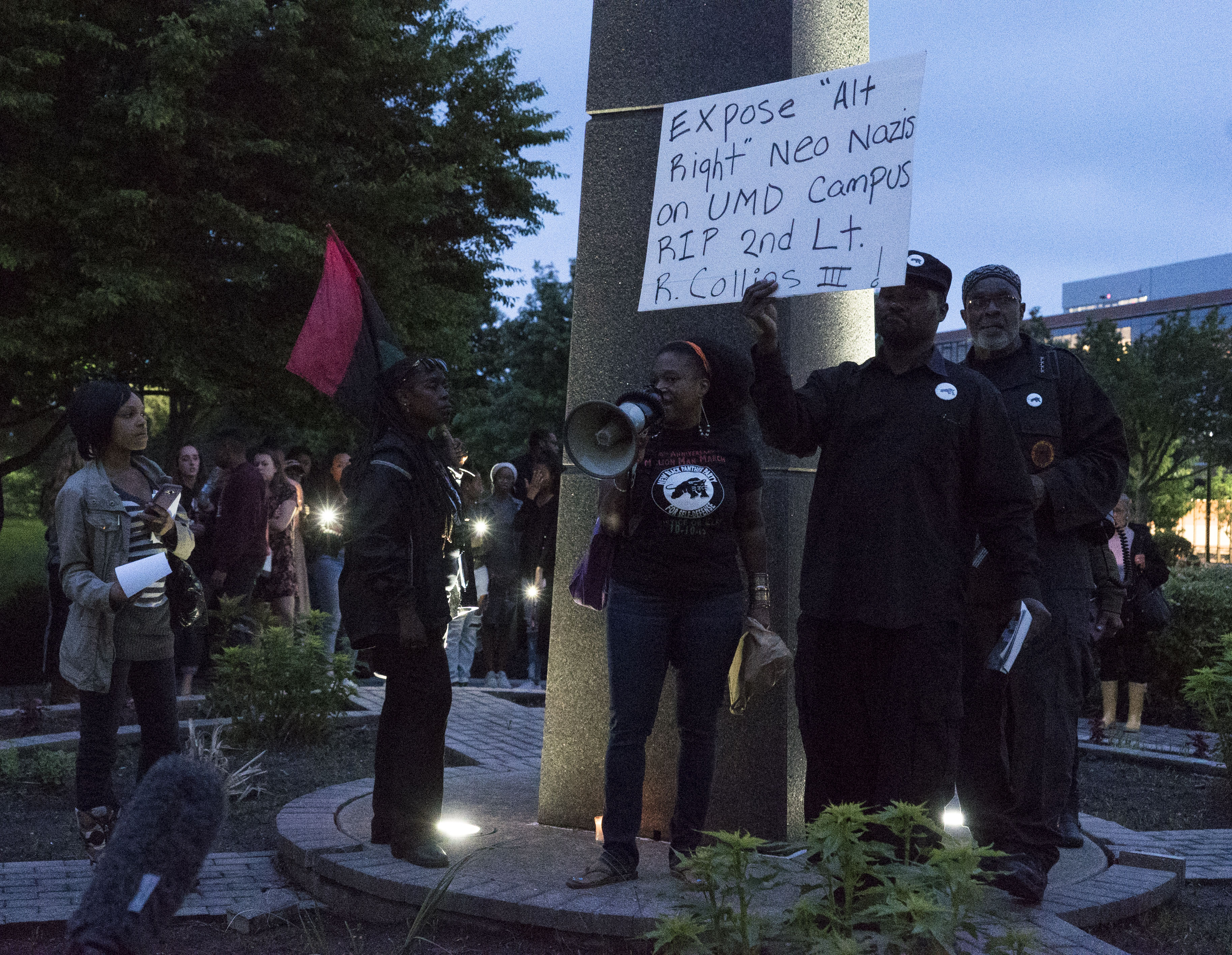Views expressed in opinion columns are the author’s own.
Last week, signs were posted on the University of Maryland campus and at Montgomery Blair High School that read, “It’s okay to be white.” In its language, the phrase is unremarkable. In practice, this is a coded affirmation of white supremacy. The combination of these factors is no accident. The signs were designed to be political instruments that fit into a tradition of American hate speech.
The most sinister rhetoric of white supremacy will implicitly promote hate while explicitly remaining innocuous — at least in the minds of white audiences. But when the initial claim receives any backlash, the wave of responses becomes far from ambiguous. A black student at this university tweeted a picture of the sign, asking, “When did it not become okay to be white?” She told WUSA9 that in response to that tweet, she received death and rape threats.
The signs were revealed to be a coordinated attempt to increase anger and division. White supremacists revealed their intentions in an online forum. “The media response will rally new support for pro-white activism,” wrote one organizer. This same political logic is at play in all of the faux-equality messaging from the far-right.
While it may be obvious to black Americans that “All Lives Matter” works to silence their voices, to many white moderates, the phrase seems harmless and inclusive. So any criticism of these phrases becomes an opportunity for white people to imagine themselves persecuted. Capitalizing on white fragility, often with the help of coded language, remains an easy and frequent maneuver.
In some respects, columns like this one are what white supremacists want. They believe that by framing this discussion as criticism of the idea, “It’s okay to be white” (as opposed to the impact of such rhetoric), they can mobilize “pro-white activism.” This strategy also appears successful. White fragility has been so well-cultivated in America that it pervades everything from our elections to Starbucks cups. Whether it manifests as a written expression of defiant white pride or the murder of 2nd Lt. Richard Collins, white fragility persists on our campus.
But while these signs may have been calculated bait, they still have a painful impact.
Messages of white empowerment give students of color reason to fear for their safety by emboldening white supremacists. The concern of mobilizing more “pro-white activism” must be addressed, but not with silence. We need to be critical of these messages while also being specific about their danger.
Obviously all white supremacist speech is divisive. But there is something particularly effective in the type of coded language that seems uncontroversial to many whites. By identifying the racism underlying these signs on campus, I have risked “taking the bait” of division. But illuminating the methods underlying white supremacist rhetoric is too important to keep quiet. This toned-down but still pro-white speech is a tool of racism. Until we understand it as such, it will continue to divide us.
Jack Lewis is a senior government and politics major. He can be reached at jlewis20@umd.edu.



